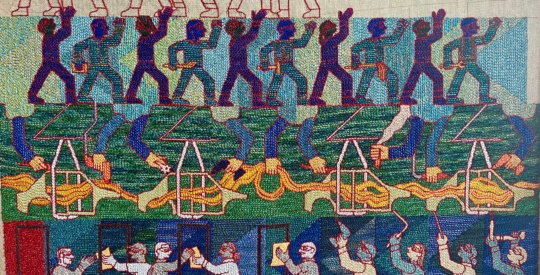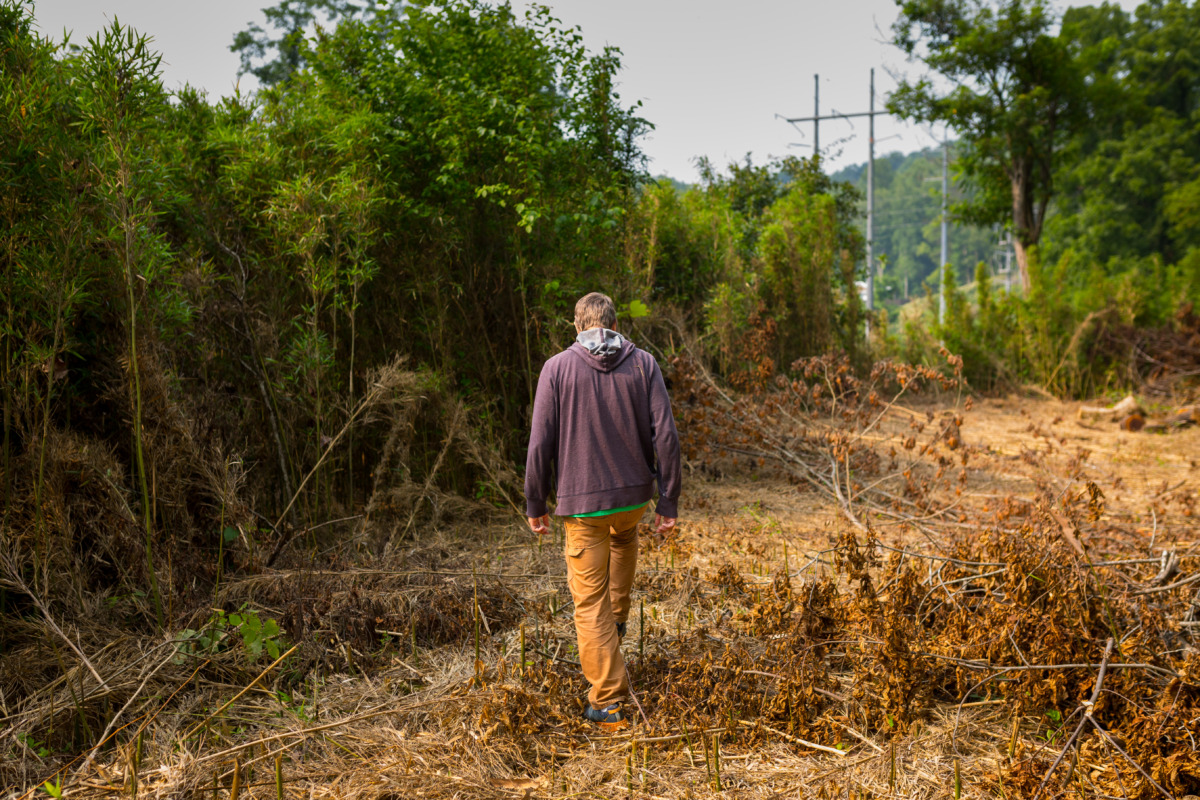
It was a Tuesday in mid-July when Adam Griffith agreed to take me to a healthy patch of rivercane outside Cherokee, North Carolina. Griffith is the director of the Revitalization of Traditional Cherokee Artisan Resources, and we’d planned to tag along as renowned Cherokee artists and sisters Betty Maney and Mary Thompson harvested the tall grass by the handfuls. I had said “yes” without question, failing to recognize that it was the peak of a record-setting heatwave and we’d still be dealing with lingering smoke from the Canadian wildfires, obscuring our visibility with a dense, cloudy haze and making my eyes water. By this point, the circumstances felt like a new, sordid normal.
I had heard that suitable rivercane is hard to come by these days, and it wasn’t clear how successful the day’s harvest would be. A type of bamboo native to the United States, rivercane was, historically, one of the most abundant plants in the southeast. However, due to European agricultural practices, modern overdevelopment, and a changing social fabric, its quantity has diminished significantly. Researchers estimate that rivercane covers less than 2% of the land it once did, and even less of that small percentage is ideal for makers like Maney and Thompson.1
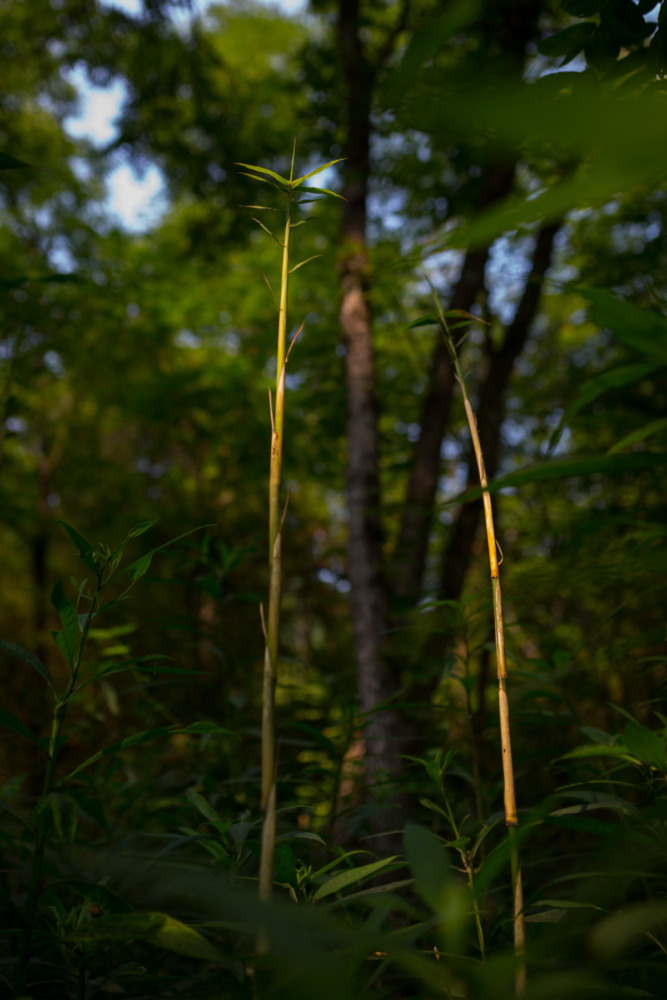
Good cane, the kind that’s an inch or so in diameter, with no knots, needs to be harvested, processed, split, and sometimes dyed before it’s woven into intricate baskets of all sizes. This work can take days and is often an all-hands-on-deck affair. Thompson described trips with her daughter, Sarah, an accomplished basket weaver in her own right, Maney, and additional children and grandchildren, to assemble bundles of about twenty-five to fifty culms–the hollow stems of the grass–each. They’d load their bounty into pickup trucks and return home to wash, clean, peel, scrape, and split the rod over many afternoons while it was still green. “Ballpark, you’re going to get eight splints out of a good cane and three, four, or five splints out of a smaller cane,” Thompson said.
I asked her how many stocks of rivercane it would take to make a small basket; but with scarce resources, it sounded like she often had to work the other way around. She told me that the size of a finished basket “depends on the height of the cane. If I have a long cane,” she joked, stretching her arms out wide, “I’m not going to cut it short.”
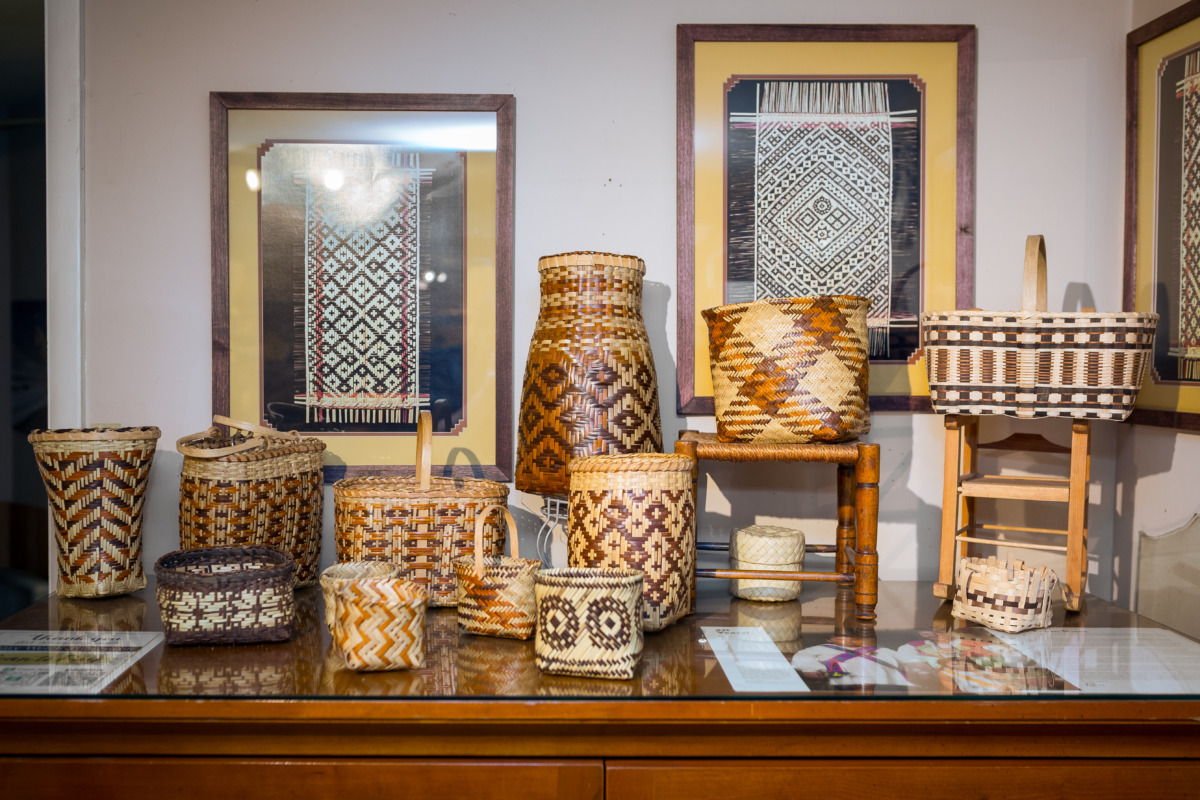
We were talking in Thompson’s studio, which seemed more like an art museum than a dedicated workspace. There were baskets, ceramics, beadwork, and plaster casts created by Thompson and other family members throughout the room, carefully arranged on various tables and shelves. “If you’re looking at a basket like this,” she said, grabbing a double weave basket made by her mother, Geraldine Walkingstick, “it’s not a huge basket, but the splint has to be double the length.” Double weaves, iconic in Cherokee culture, are literally a basket inside of a basket, woven by the maker in a continuous undertaking and sharing the same rim. The intricate weaving produces baskets that are incredibly strong and watertight, while also creating a dynamic, eye-catching, and unmistakable pattern.
They’d load their bounty into pickup trucks and return home to wash, clean, peel, scrape, and split the rod over many afternoons while it was still green.
Thompson kept talking as she grabbed a soft tape measure. “If you consider that this one is thirty inches, then you’ll need a sixty-inch splint to do that double weave. And look how narrow those are,” she said, bringing the basket closer to me. “They’re very thin. It probably didn’t start that thin, but the more you strip it down, the more narrow it becomes.”
***
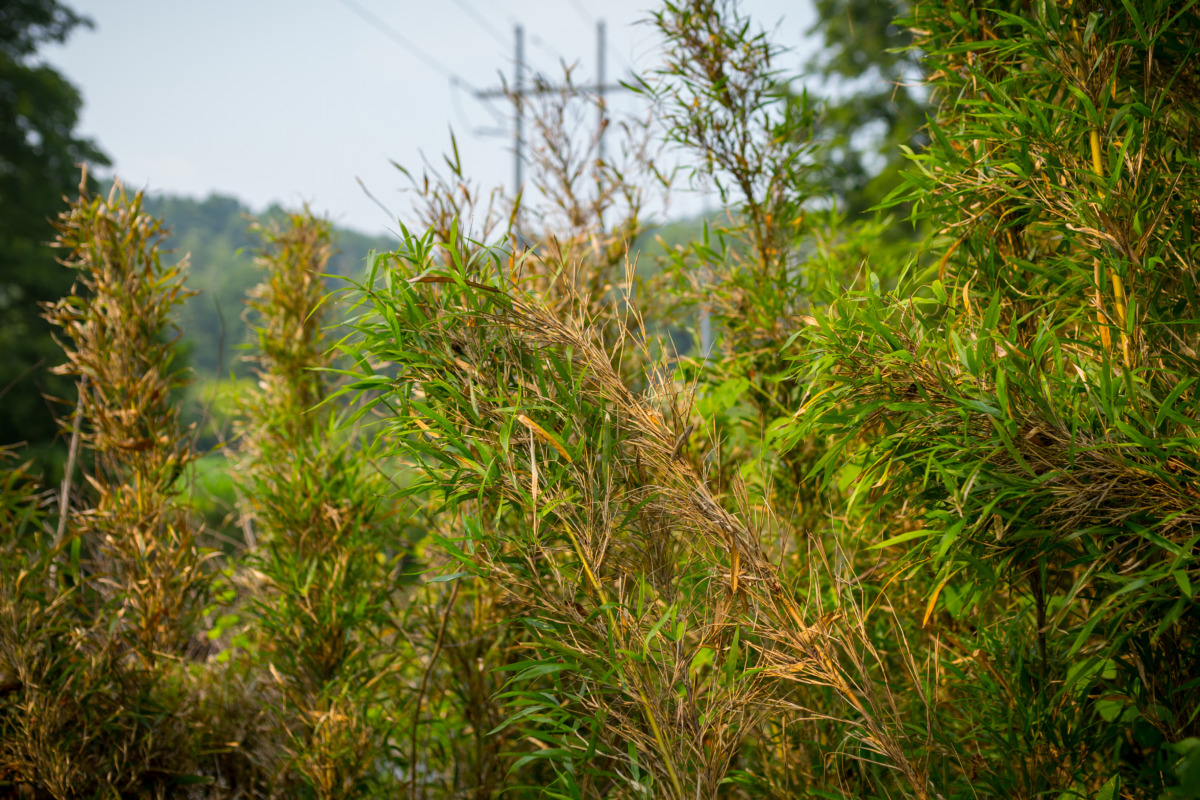
The Revitalization of Traditional Cherokee Artisan Resources (RTCAR) started in 2004 to help protect, promote, and educate local farmers and non-Native people about essential but dwindling native materials, like rivercane, white oak, natural clay, a coterie of dye plants, and more. It’s supported in part by the Cherokee Preservation Foundation, a tribal-sponsored nonprofit focused on cultural and environmental preservation alongside economic development. Griffith, a geographer unaffiliated with any tribe, has been RTCAR’s director since 2019, but this work isn’t new to him. He managed Western Carolina University’s Rivercane Restoration Project from 2006 to 2014, an experience that led to his master’s thesis and now, years later, his current role. “My job,” he explained to me, in simple terms, “is to make sure Cherokee artisans have what they need.”
This responsibility is a tall order for many reasons. “The challenge with finding rivercane suitable for artisans is that the canebreak needs to achieve some level of depth,” Griffith remarked. Rivercane canopies grow in a lens shape, with the grass low on the edges and the center culms reaching the greatest heights. Each canopy’s cover prevents light from pouring in, keeping the center stems free of leaves, knots, or “stem scars.” These towering, smooth stalks are ideal for blowguns, baskets, mats, and other crafts.

Rivercane needs a significant amount of space to form this convex patch. RTCAR works with landowners and nature conservancies willing to devote a considerable area to the cause. Its funding both helps transplant rivercane rhizomes to new locations and builds upon patches that are already flourishing. Its agreement with collaborators includes a memorandum of understanding that allows tribal artisans to harvest under RTCAR’s supervision. Partnerships with conservancies and private landowners are crucial, Griffith told me, because most of the harvest-friendly cane found today are in “remnant patches,” or spots “relegated to the narrow strip of land between a body of water on one side and a road, a railroad, or a mowed field on the other.”
“It may not be valuable to some because they have no purpose for it, but we do—as Cherokee artisans, basket weavers, carvers, as people. It’s important to us, to who we are. These materials connect our history to the present and help keep it alive.”
Before our trip, Griffith pulled up the patch we would visit on Google Maps; it was near the Tuckasegee River and under the spiraling cement interchange where Highway 74 meets 441. “We’ll make a U-turn, go down to this exit, make another U-turn, and park underneath the bridge,” he continued, his mouse tracing how we’d make our way to the small patch beside the highway on-ramp, underneath some high-tension power lines. It was a far cry from the bucolic walk in the woods that I had imagined.
RTCAR’s work primarily relies on another dwindling resource—time—which can lead to unexpected hiccups. In 2005, the organization granted Mainspring Conservation Trust in nearby Franklin, North Carolina, enough resources to plant five hundred white oak trees on their property. White oak is another highly sought-after traditional basket material. In 2020, Griffith accompanied a group of artisans to harvest from the now-mature site. The harvest wasn’t a failure by any means, but “after fifteen years,” he said with a laugh, “it was determined that the trees were just okay.” The trees at Mainspring grew too fast, partially because the soil was too nutrient-rich, and the resulting white oak splints were not ideal for basket weaving: they were hard to pull apart and not as flexible as artisans would like. White oak is desperately needed by Cherokee craftspeople, more so than rivercane, but it takes a long time to grow. “Establishing a big patch of rivercane is a little bit faster,” Griffith clarified. “You can do it in about a decade.”
***
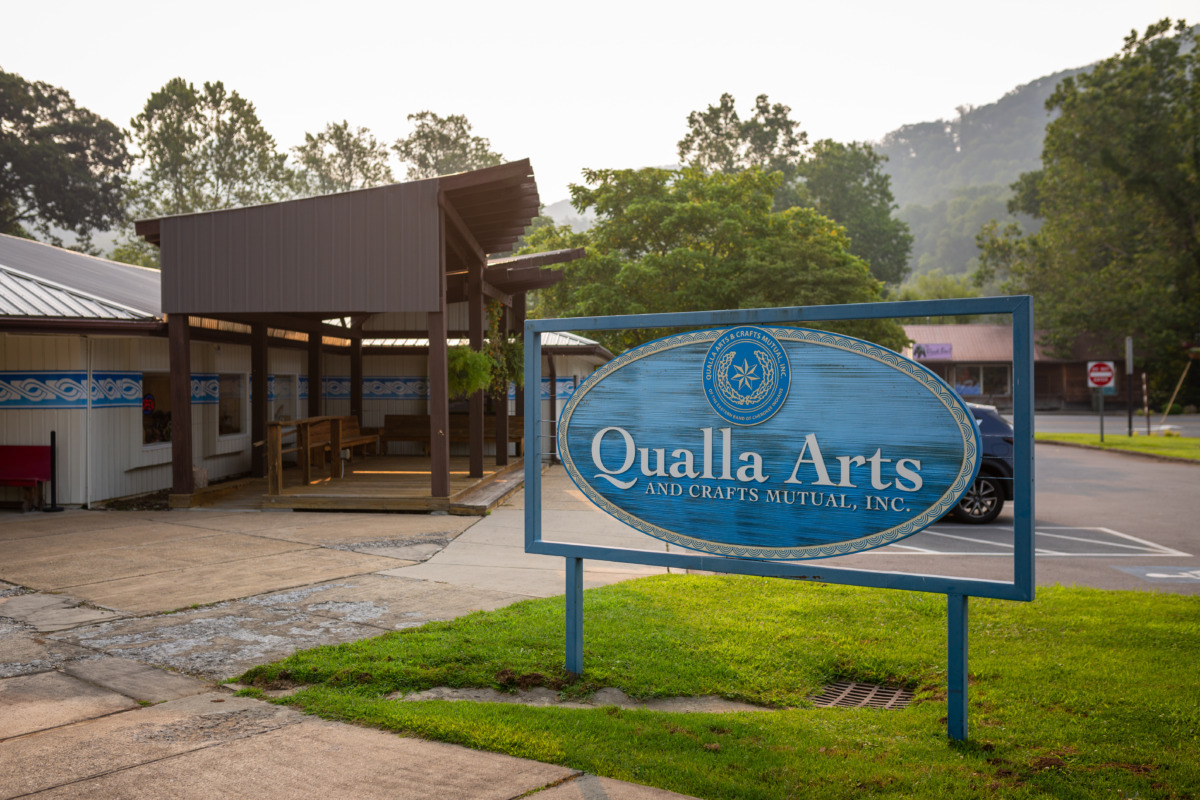
RTCAR also funds educational programs including classes at the local high school, area art centers, and the legendary Cherokee-owned craft cooperative, Qualla Arts and Crafts Mutual. The nonprofit aims to bolster waning supplies, traditions, and crafts from all directions both by helping tradition-bearers acquire the stockpiles they need and inspiring younger generations to continue age-old practices.
Educating folks about the scarcity of native crops and trees in the region, their importance to Cherokee culture, and the detailed work RTCAR supports is the first step in this uphill climb. Thompson hopes that sharing this knowledge will convince landowners and organizations to preserve natural ecosystems and help make reserves available for Cherokee artisans and craftspeople all over Appalachia. Maney echoed that sentiment, adding, “It may not be valuable to some because they have no purpose for it, but we do—as Cherokee artisans, basket weavers, carvers, as people. It’s important to us, to who we are. These materials connect our history to the present and help keep it alive.”
We didn’t end up harvesting any rivercane on that sweltering Tuesday. It was too hot for Maney and Thompson to venture out, and Griffith wasn’t sure what there would be to salvage. Last November, Duke Energy and the North Carolina Department of Transportation flagged the area for some tree work. Then, despite Griffith’s emails and continuous pleas to let him and others care for the site, “they recently mowed down this whole patch,” he said, pointing to a part of the satellite image that’s now brown and grainy. “When you zoom in here, you can see all the stumps where the rivercane used to be. They mowed all of this just to cut down a couple of trees.”
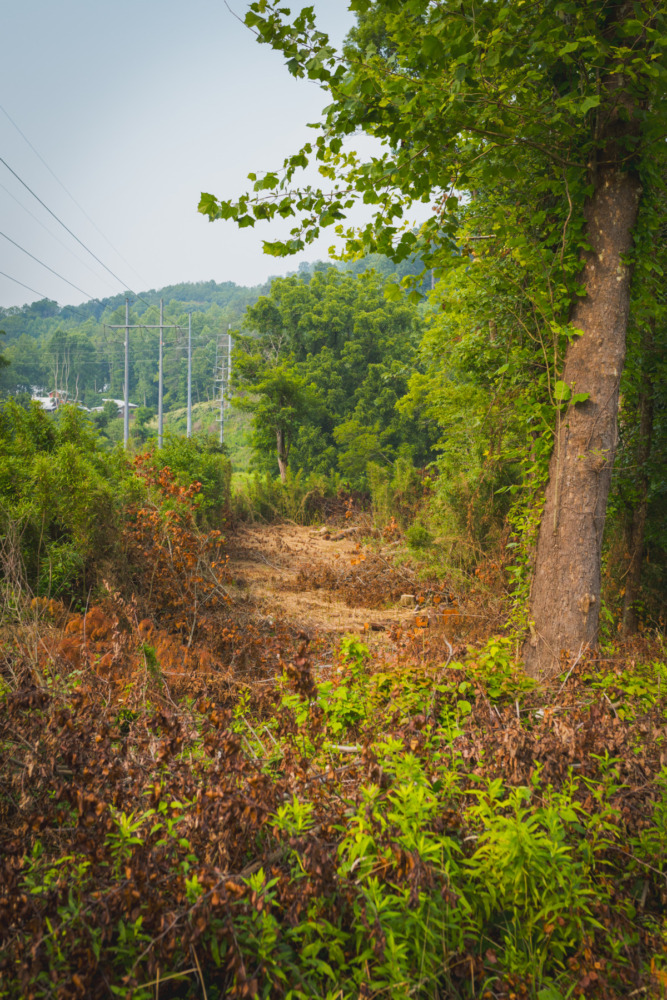
- [1] Fariello, M. Anna. 2009. Cherokee Basketry: From the Hands of Our Elders. History Press.


